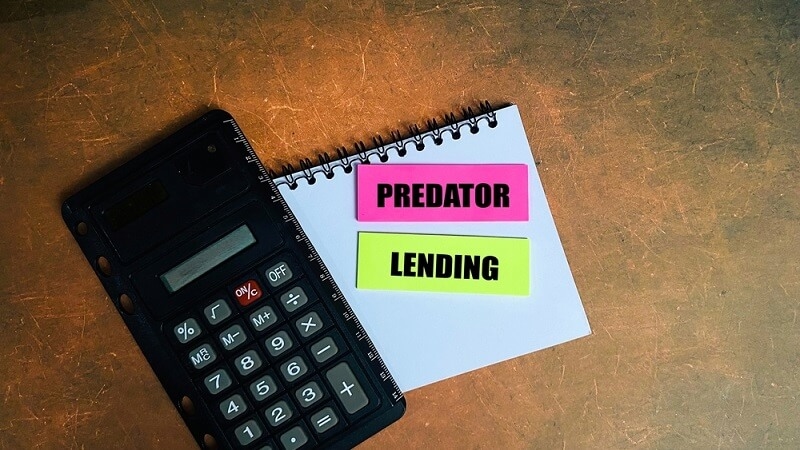
Many people may feel borrowing money is their only option for making ends meet or getting through unexpected expenses. Not all creditors are kind to their clients. Some dishonest creditors and lenders take advantage of people in difficult financial situations with misleading practices, huge service rates, and additional hidden costs. These lenders participate in predatory lending practices that put clients in seemingly unmovable debt.
As it turns out, borrowing money doesn't have to be risky. You can still protect yourself when borrowing money. You can protect yourself while lending money with the proper knowledge and some common sense. This guide will discuss the steps that should be taken to protect you at each significant stage of the borrowing process, which should protect you from the pitfalls of predatory lending.
This guide will cover everything from recognizing bad loan terms to safe preparation tips that can help you stay on a good path after you have borrowed the money. With an understanding of what may signal high-interest rates and responsible borrowing, you will make informed decisions to protect yourself from lenders that are not treating you fairly.
Predatory lending is the term for dishonest, unscrupulous, or unjust lending practices in which lenders prey on vulnerable borrowers. Rather than assist people in addressing a financial need, these loans tend to create financial burdens that add to the borrower's debt.
At its essence, predatory lending occurs because lenders profit when borrowers struggle to repay loans. Preventing predatory lenders from impacting your long-term financial stability is critically important.
Even careful people can get caught up in predatory lending, and here’s why:
Understanding these four guiding influences should allow you to pause, reflect, assess your options, and help you make safer choices.
The very first step in avoiding predatory lending traps is seeing high rates.
If the repayment terms seem steep or confusing, walk away.
Predatory lenders count on borrowers not reading or understanding loan documents.
Taking the time to read—and even ask questions—about what you're signing can help you avoid deception.
If a lender pushes you to sign quickly or attempts to discourage you from asking questions, they engage in predatory behavior.
If the lender insists you sign something quickly, that is your signal to leave.
Predatory loans often appear to be the "only option," but safer choices are available.
The more options you review, the easier it will be to spot unfair terms.
Avoiding unmanageable debt is the best responsible borrowing advice.
Responsible borrowing means treating yourself today while protecting your future.

Predatory lenders often target individuals with poor or limited credit history. Improving your credit makes you less vulnerable.
Over time, good credit gives you access to safer loan options and lower interest rates.
Predatory lenders often use flashy ads, promises of “guaranteed approval,” or pressure to borrow quickly.
If the marketing sounds too good to be true, it probably is.
Honesty is the best policy and is everything when lending is reasonably safe. An honest lender will provide clear terms.
If the lender will not provide specifics, it's a red flag, and you should run away.
Sometimes, the smartest option is not to take the loan at all!
You've done the above, and now think you should take out a loan. These options help you avoid predatory loans.
Knowledge is the most effective defense against predatory lending.
By continuing to learn, you’ll be better equipped to recognize and avoid dangerous financial traps.
Knowing the loan products that are likely to include predatory practices narrows down your options for safety.
Identifying these patterns helps avoid predatory lenders when it is not too late!
If you’re in a rush, here’s a simple safe borrowing checklist:
Predatory lending exploits irrationality, desperate behavior, and ambiguity. But by taking these steps to avoid predatory lending traps, you will hopefully do so safely and responsibly the next time you need to borrow money. Just remember to look for the high-interest warning flags, read the fine print, and seek lenders who practice transparency.
A healthy sense of financial security comes from borrowing and making decisions that optimize one's ability to pursue monetary and economic stability in the long term. Adopting the proper mindset and using information about responsible borrowing can protect one from danger and help one establish or obtain a healthy financial future.
Your paycheck, savings, and dreams are all worth protecting—don't let predatory lenders thwart your path to financial independence.
This content was created by AI